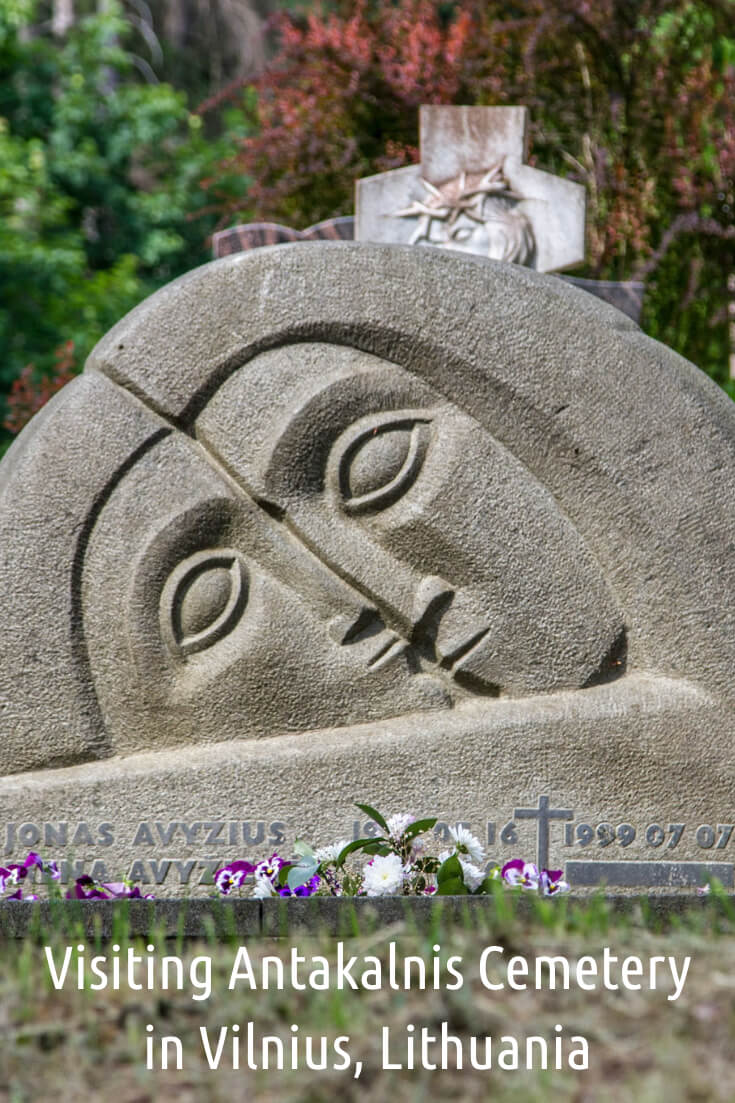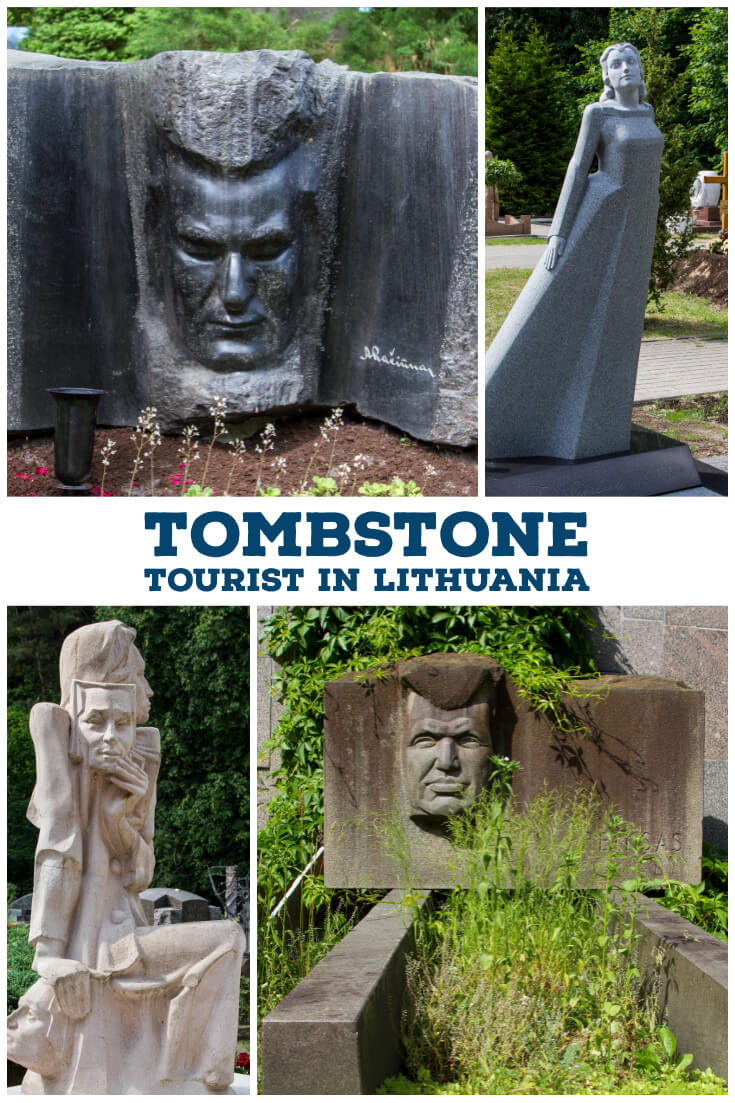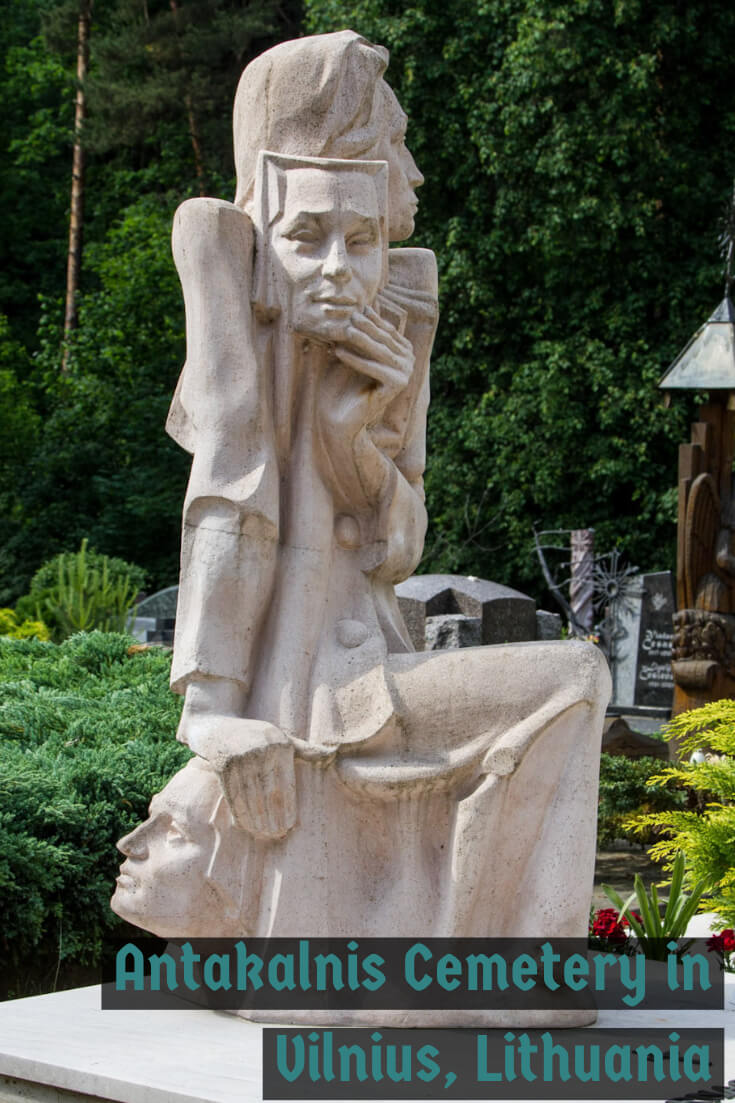Being a Tombstone Tourist in Lithuania
Antakalnis (Antakalnio in Lithuanian) Cemetery is one of the most interesting graveyards we have visited in a long while (Budapest’s Kerepesi and adjoining Kozma Street cemeteries are also high on the list but neither Kirsty nor I have got around to writing about them yet).
The suburb of Antakalnis is one of Vilnius’s oldest and most historical. It’s only about 3km east of the old town, and the cemetery itself is an absorbing and peaceful place to while away a couple of hours or so. I suspect, however, that only a small percentage of the increasing number of tourists who are coming to Vilnius these days know of its existence so, if you do decide to visit, it is likely that you will just share the place with the occasional solitary gardener and a handful of people who are coming to show their respect and/or remember loved ones.
Although Antakalnis Cemetery dates back to the early part of the 19th century and was originally used to bury laymen, orphans, and soldiers, it was the Soviet-era tombstones and memorials that attracted us to it in the first instance.
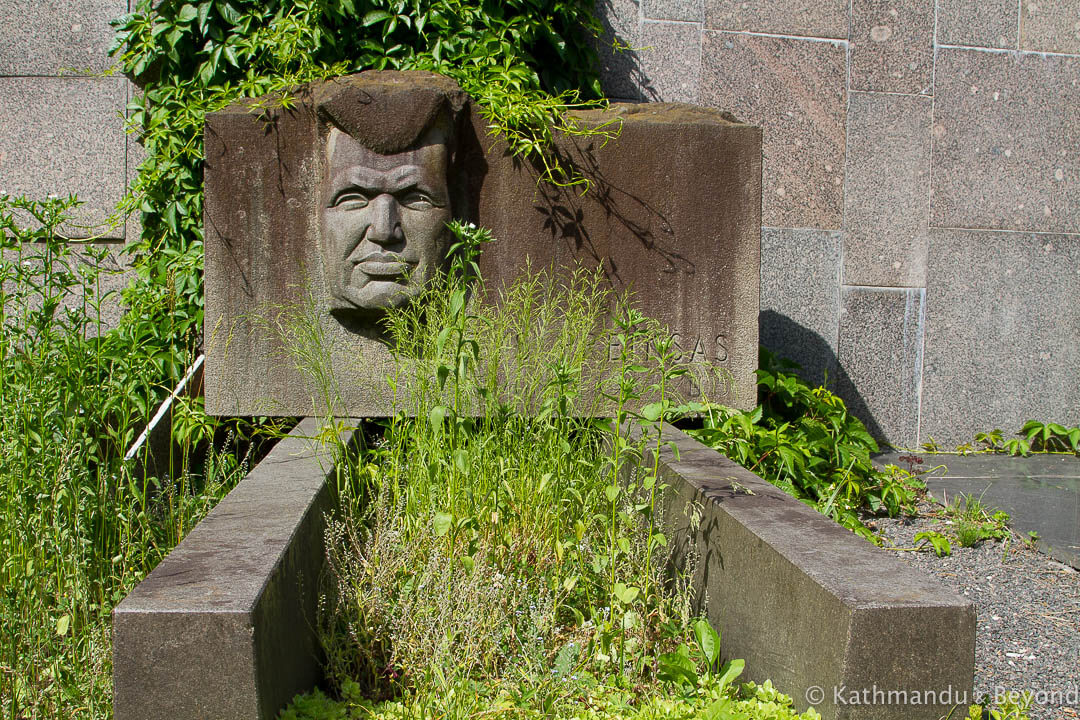
The most striking monument is the Memorial of Red Army Soldiers (*). Originally created in 1951 by Lithuanian-born sculptor, Juozas Burneika, it was re-designed between 1976–84. It sits on a small hill towards the back of the cemetery and to reach it, you need to pass a cascade of graves belonging to well-known Lithuanian writers, artists and actors. The names on the busts didn’t mean a whole to us personally, but the sculptures were stark and very Soviet in design and we felt as if they were following us with their eyes as we made our way past them towards the Red Army cenotaph.
(*) In December 2022, as part of a drive by the Lithuanian authorities to remove monuments and memorials that glorify the Soviet Union from public spaces, the Memorial of Red Army Soldiers was dismantled and taken away from Antakalnis Cemetery. Instead, it will be placed in the National Museum of Lithuania.
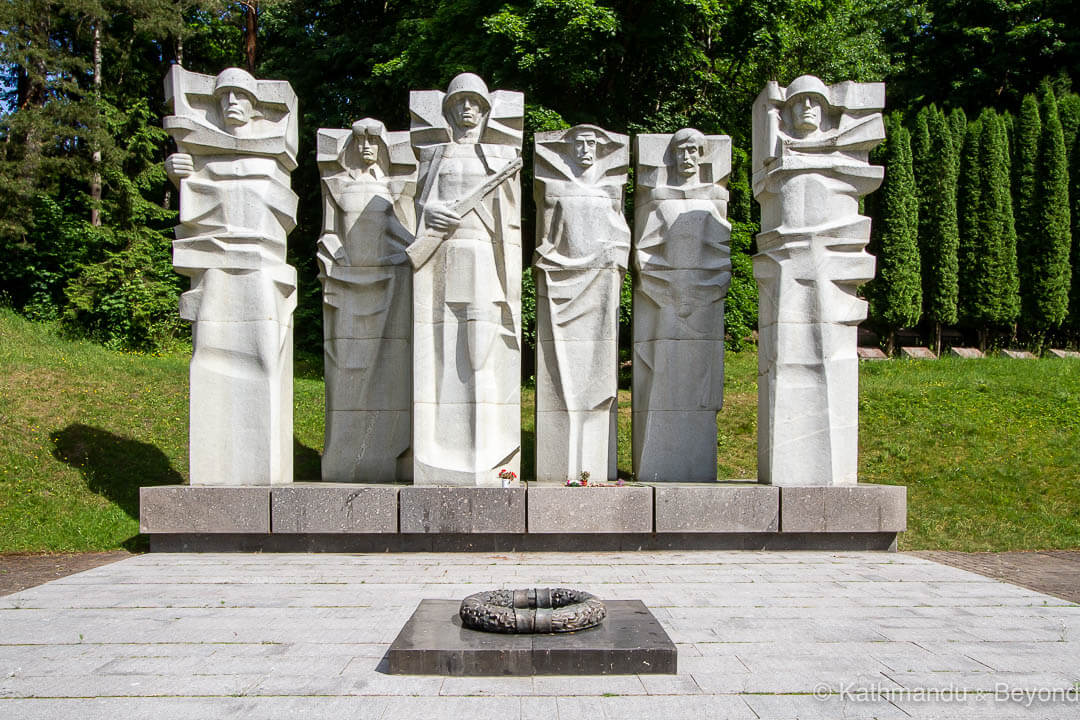
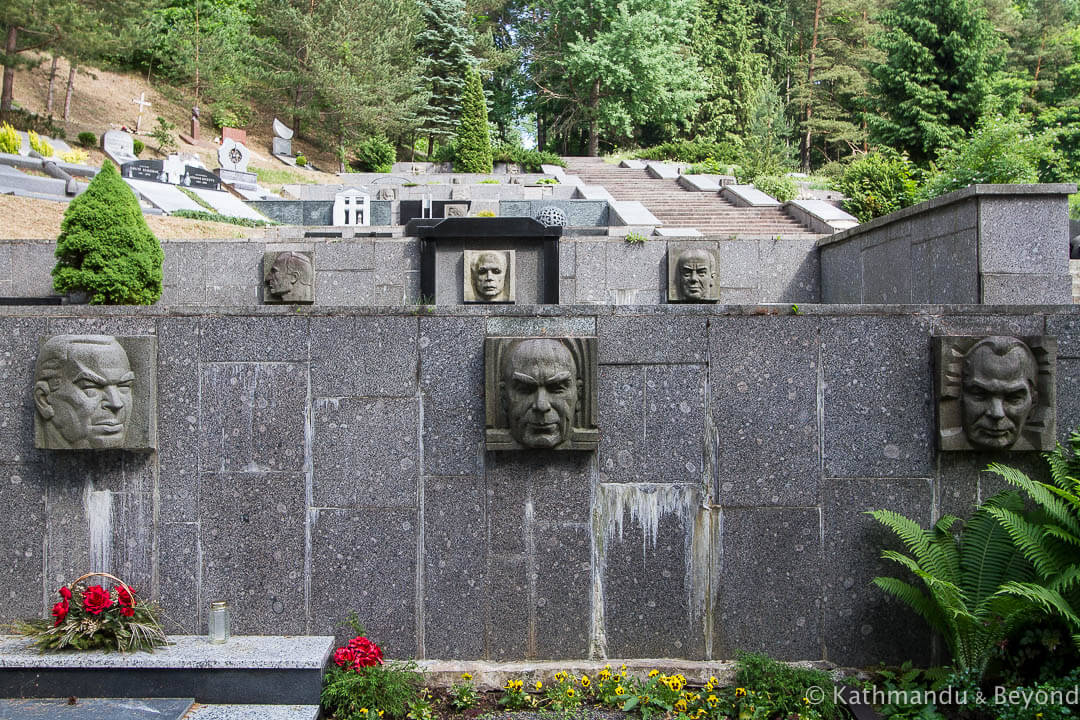
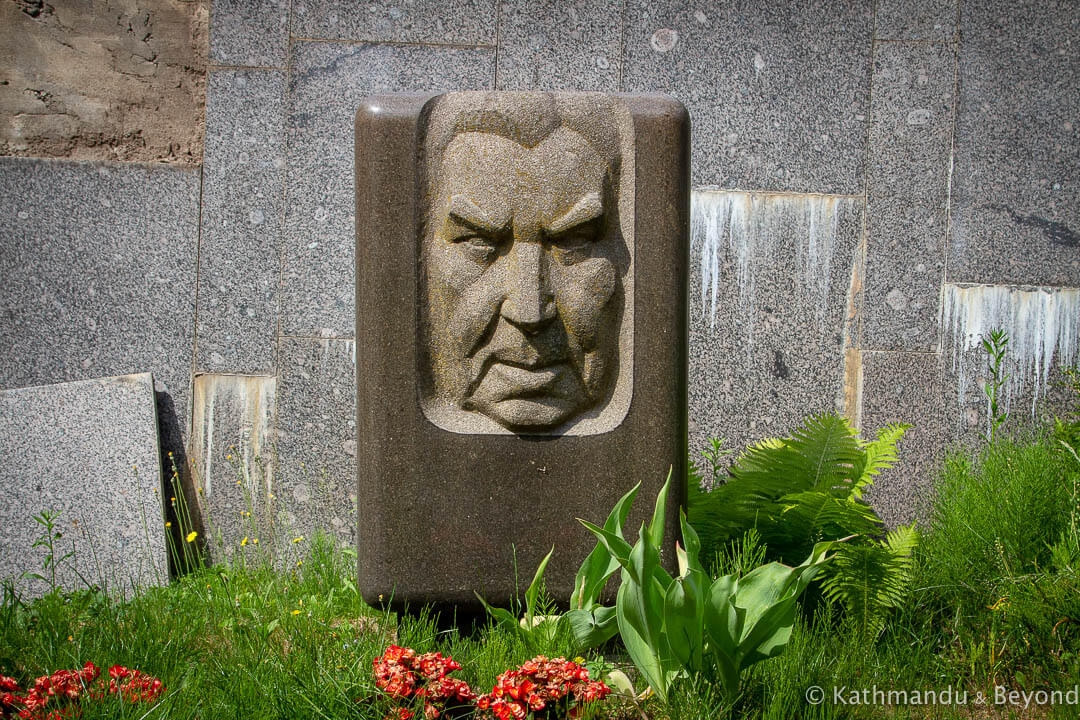
The graveyard itself expanded significantly in the first half of the 20th Century. Many Lithuanian, Russian and German soldiers were buried here at the end of World War I, while the Polish-Soviet War of 1919-1920 saw an influx of troop casualties from both sides of that particular conflict. And the number of graves increased even more after World War II when numerous Red Army soldiers were laid to rest here. By this point, Antakalnis was the largest cemetery in Vilnius and, because of the high percentage of soldiers buried here, it is often referred to as Antakalnio Military Cemetery or Soldiers’ Cemetery.
What’s also interesting is that in 2003 and 2010 respectively, the remains of over 3,000 Napoleonic soldiers, mainly of French descent, who fought and died in the 1812 invasion of the Russian Empire, were exhumed from their mass graves (actually French-dug trenches) and reburied at Antakalnis Cemetery (*)
(*) I know very little about the 1812 French invasion of Russia (or the Patriotic War of 1812 as it’s known in Russia) but it seems that Napoleon’s army went through Vilnius in order to march on Moscow and that the Russian headquarters were concentrated in the city at the time.
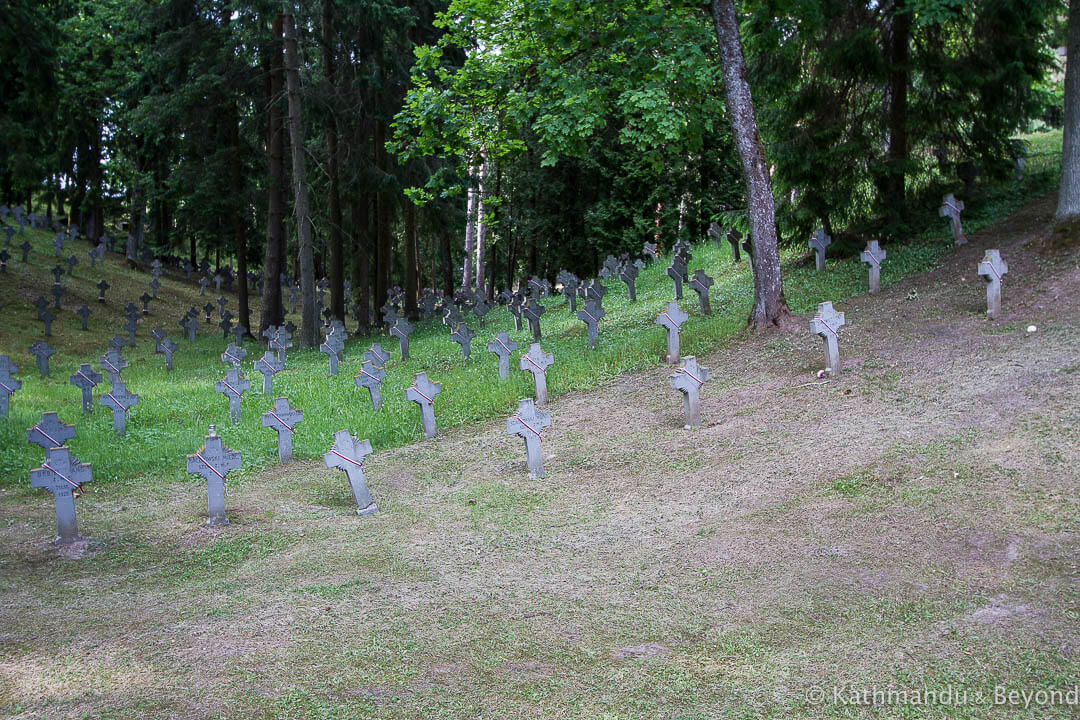
The most important post-Soviet memorial inside the pantheon is the Monument to the victims of January 13 1991. Lithuania declared independence from the Soviet Union in March 1990 but not everyone was happy with this proclamation and leaders in Moscow and pro-Soviet groups in Lithuanian itself voiced their opposition to it. Events came to a head in January of the following year, when the newly elected, pro-democracy government called upon its supporters to protect key buildings throughout the capital, including the main parliament building (Seimas Palace) and the 326-metre tall TV Tower/Radio and Television Centre. The response from the nation was huge and hundreds of thousands of Lithuanians from all over the country reacted to the request. In retaliation, Moscow and its allies sent in the military and as a result, 14 civilians were killed and over 700 were injured.
The centrepiece of the Monument to the victims of January 13 1991, is Pietà by Lithuanian’s most celebrated modern sculptor, Stanislovas Kuzma. Nearby, another monument remembers seven unarmed Lithuanian policemen and customs officers who were executed in July 1991 by Soviet OMON forces (Special Purpose Police Unit) at the newly-formed frontier post near Medininkai, a small village close to the border with Belarus.
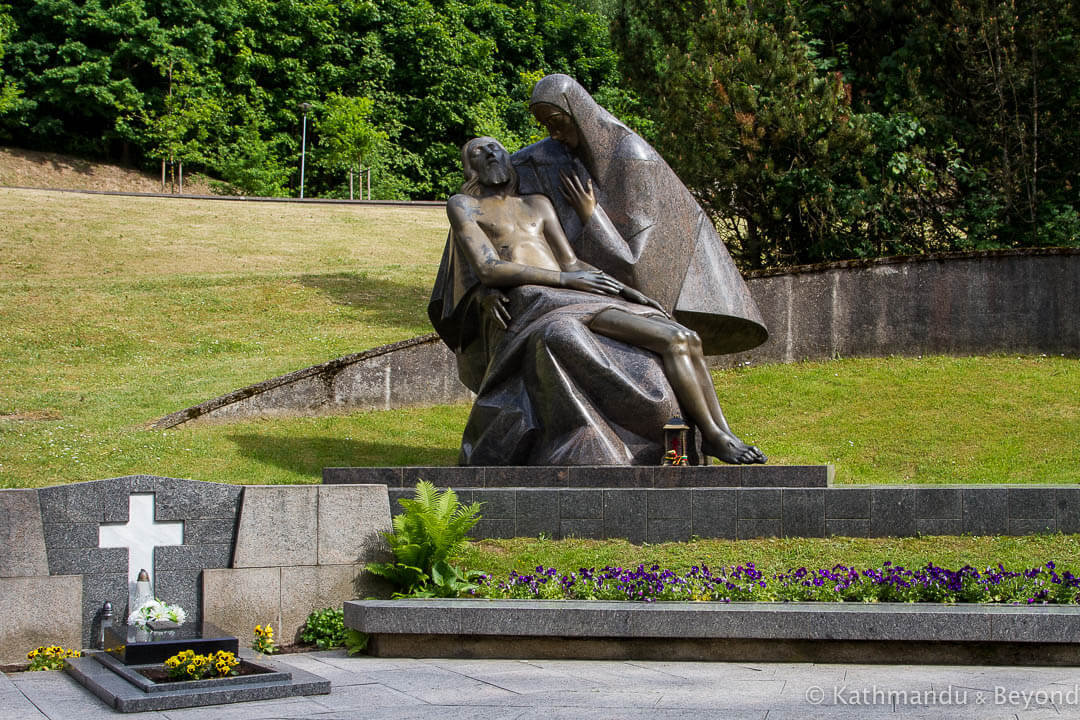
There isn’t a great deal more I can say about Antakalnis Cemetery in Vilnius. Even though it’s the largest graveyard in the city, it’s still not that big in comparison to other burial grounds elsewhere in Europe but, as I said in my opening paragraph, it is definitely one of the most fascinating cemeteries we have visited, simply because the tombstones, and I’m talking predominately about the Soviet-era ones, are very different from what you normally see in a graveyard. It makes me wonder if there are any more cemeteries like this in other parts of the former Soviet Union and/or the Eastern Bloc. A quick search on the Internet doesn’t bring up anything obvious but I’ll dig deeper and, if I find any, I’ll add them to our never-ending list of places we want to visit next time we are in the region.
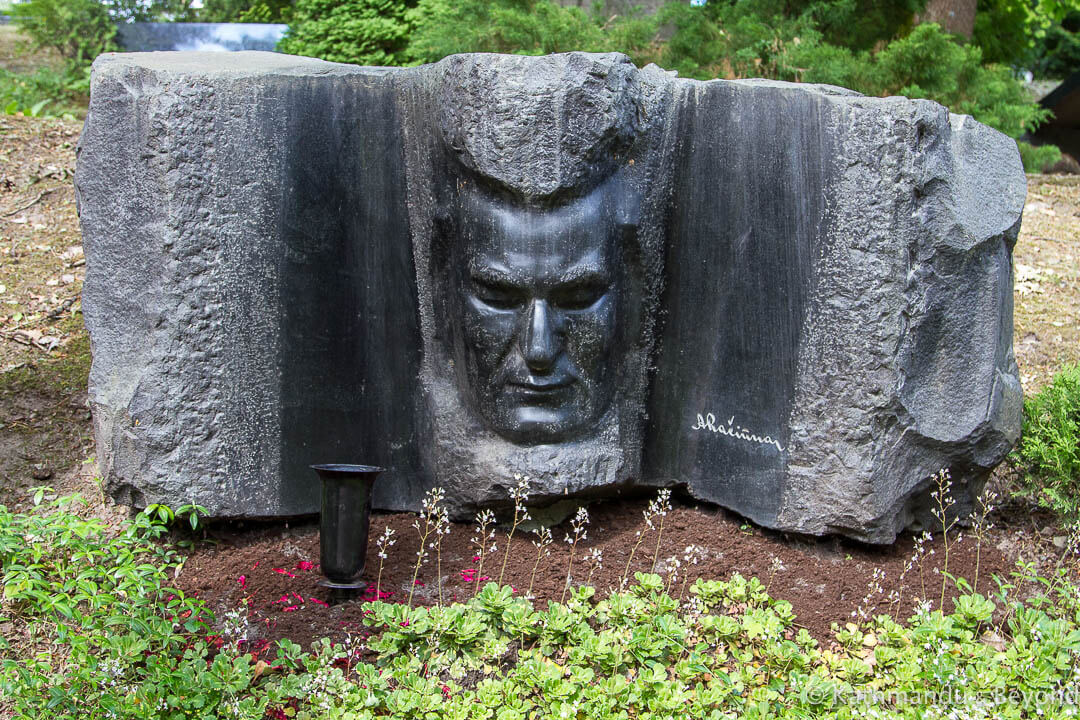
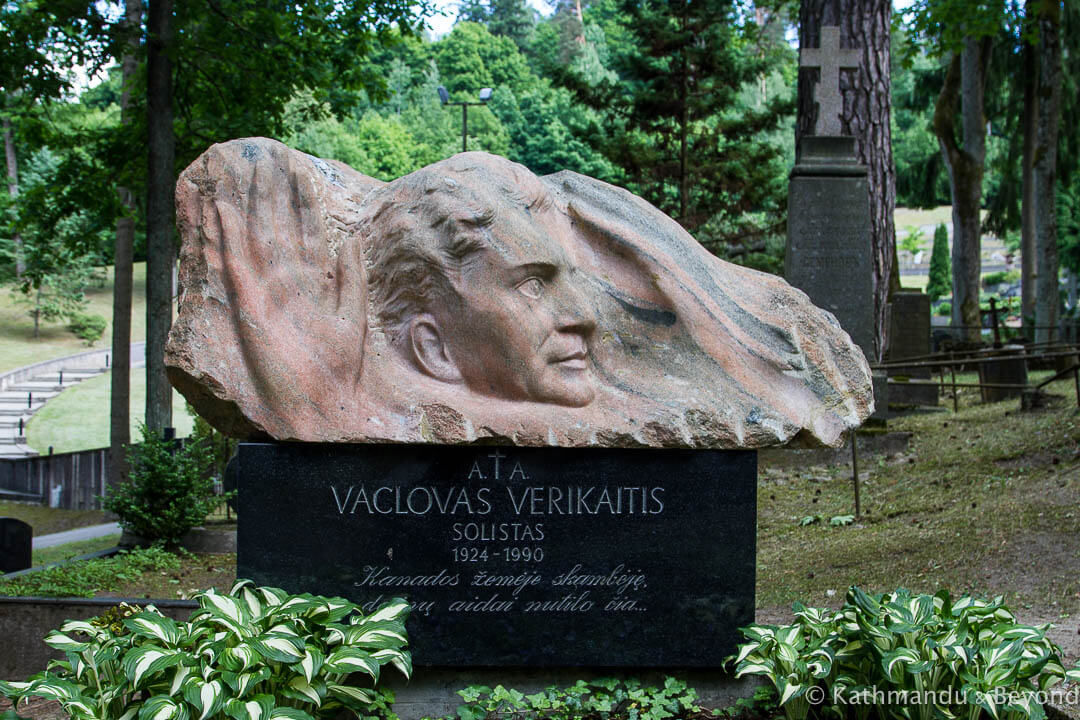
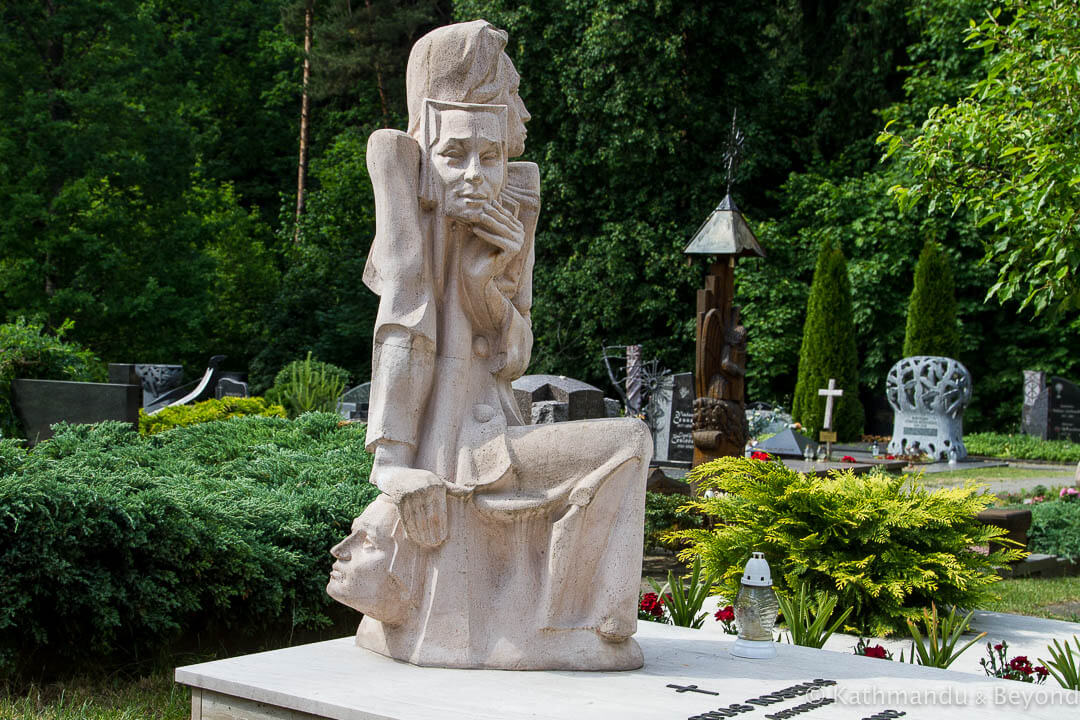
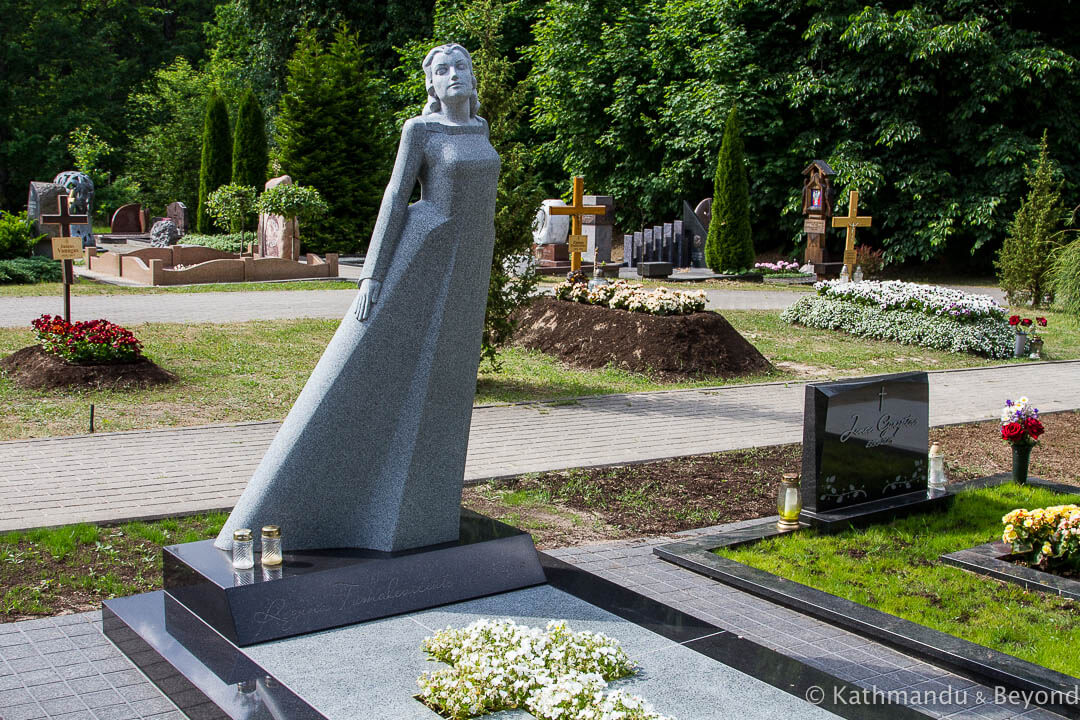
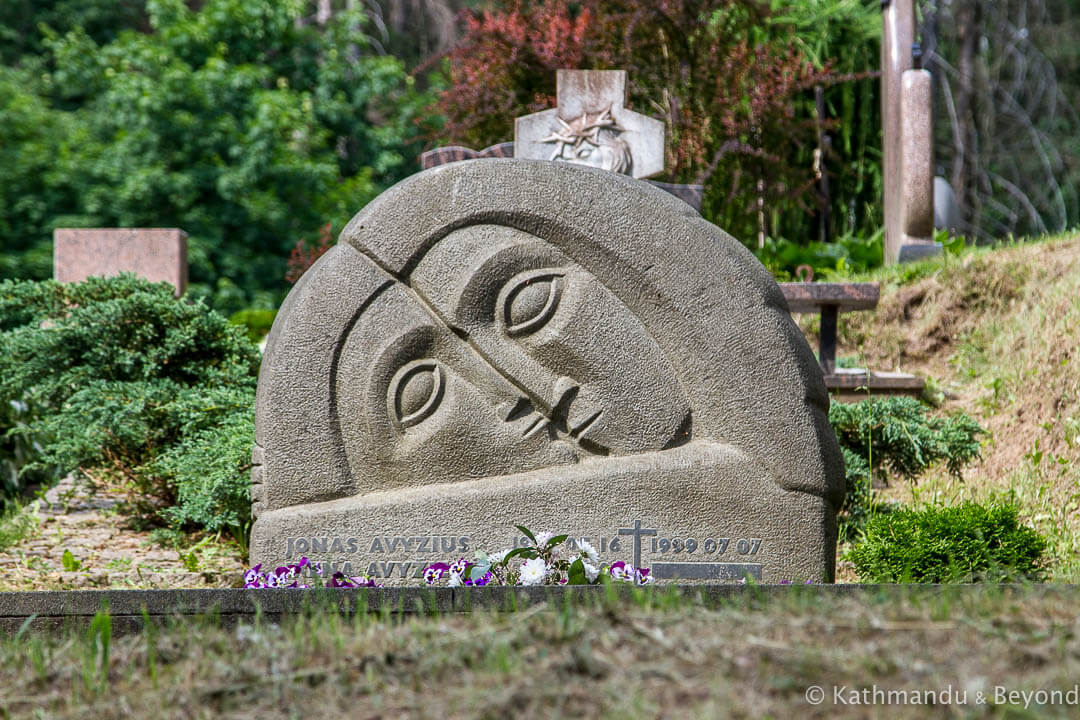
How to get to Antakalnis Cemetery in Vilnius on public transport
Take bus #2 from Vilnius bus station (which is opposite the train station) and get off at Leono Sapiegos Street stop. The bus departs every 6 minutes and the journey time is around 25 minutes. The cemetery is a kilometre walk from Leono Sapiegos Street stop.
Bus #2 goes along Vilniaus gatvė (Vilniaus g.) before turning and following the river when it reaches the bridge so you can pick it up along the route if you are already in the centre of the city.
The other option is to walk. The cemetery is 2.7km from Gediminas Castle Tower in the old town, for example.
The GPS coordinates for Antakalnis Cemetery are 54.699257, 25.322007.
READ MORE BLOG POSTS FEATURING LITHUANIA
